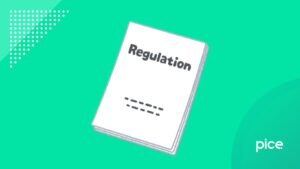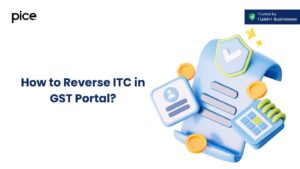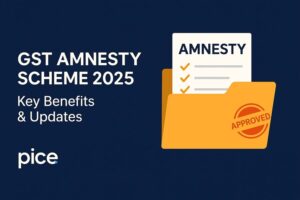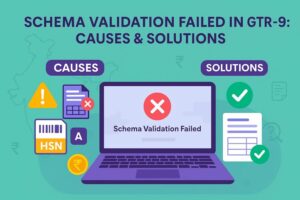Format of Form GST RFD 02 – Acknowledgement of Refund
- 4 Apr 25
- 11 mins

Format of Form GST RFD 02 – Acknowledgement of Refund
Key Takeaways
- Form GST RFD-02 acknowledges receipt of GST refund applications filed through Form RFD-01.
- It contains vital details like acknowledgment number, filing date, taxpayer details, jurisdiction, and refund amount.
- RFD-02 is issued within 15 days of submitting a refund application on the GST portal.
- Accurate submission of RFD-01 avoids rejections or delays, ensuring smoother refund processing.
- Refund status and progress can be easily tracked using the unique acknowledgment reference number provided in RFD-02.
Goods and Services Tax (GST) in India provides a structured mechanism for taxpayers to claim refunds on excess tax paid, input tax credits, and other eligible transactions on the GST portal. The refund application process begins with the filing of Form GST RFD-01, after which the tax authorities issue Form GST RFD-02 as an acknowledgment.
This form serves as proof that the refund application has been received and is under processing. It contains details such as the acknowledgment reference number, date of submission, and any deficiencies found. Knowing the format and significance of GST RFD-02 is crucial for businesses and individuals to track refund claims and ensure compliance with GST regulations.
In this blog, let us identify some key details included in Form GST RFD-02. Moreover, we will walk you through the procedure of filing the application for refund so that you can receive RFD-02 within 15 days.
What is Form GST RFD 02?
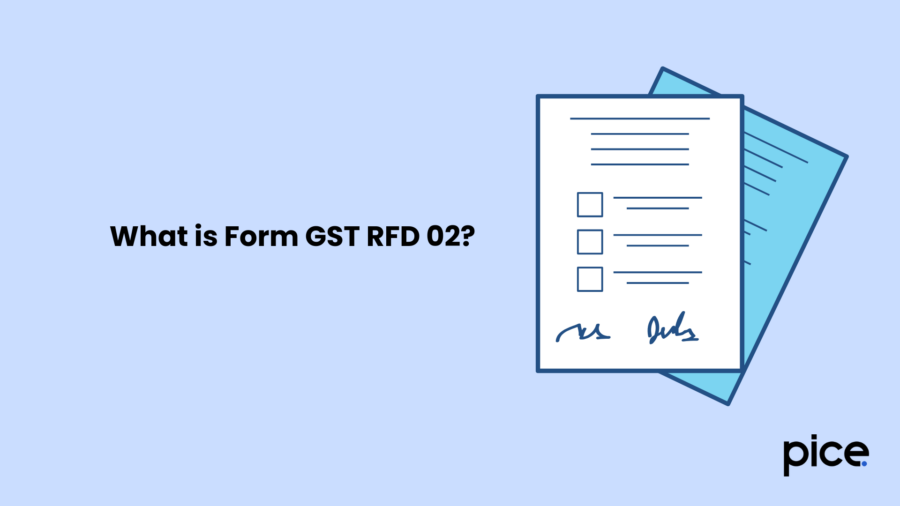
Form GST RFD-02 is an acknowledgment issued by the GST authorities to confirm the receipt of a refund application submitted in Form GST RFD-01. Whenever a taxpayer’s application points to a refund claim from their electronic cash ledger, the GST Council issues an acknowledgement in the form of RFD 02. One can easily access this document through the unified portal.
Upon referring to this document you can verify the date of filing of the claim along with the deadline mentioned in sub-section (7) of section 54. The time period for completing the refund mechanism is counted from the date of application.
Fields of Form RFD-02
An acknowledgement in the form of RFD-02 is made available to the registered taxpayers on the common portal. After an applicant has filled out the form GST RFD-01, the subsequent acknowledgement document (RFD-02) can be found auto-populated on the GST portal.
Once you are done with filing the application for a refund, the following particulars are highlighted in the acknowledgement receipt:
- Acknowledgement Number: It is a unique number assigned to every different form GST RFD 02.
- Date of Acknowledgement: Here, an applicant can simply verify the date on which the Council issued the corresponding RFD-02.
- GSTIN: When GSTIN/ temporary ID/ UIN is available, the same is reflected under this section.
- Taxpayer Name: In this part, you can find the name of the entity who filed RFD-01/01A in the first place.
- Form No.: This section clarifies whether the RFD-02 has been issued against RFD-01 or RFD-01A.
- Form Description: It is an essential field containing a brief description of the previously filed RFD-01/01A.
- Centre Jurisdiction or State Jurisdiction: Between these two options, you will see one selected under which the nature of the refund falls.
- Filed by: Here, the name of the authorised signatory is disclosed who filed a request for refund on behalf of the particular GSTIN.
- Place: The mentioned GSTIN’s place of business is stated here.
- Refund Application Details: In this table, you can find certain data related to RFD-01/01A, such as the relevant tax period, the ground for refund, the date and time of filing the application, etc.
- Amount Claimed as Refund: The particulars of the heads against which an applicant is claiming a refund are listed in this table. This can be interest, tax, penalty, and other miscellaneous categories. Further, these heads are broken down into CGST, SGST, IGST, and cess.
Staying aligned with the direct tax compliance, GST Council issues this RFD-02 form within 15 days from the date of submitting a GST refund request. However, to avoid a rejection of refund claim or an extended time limit, you must make sure that all the details declared via RFD-01/01A are correct. Otherwise, the authorities will send you RFD-03 or the notice for rejection, seeking valid clarification for your mistakes.
Stepwise Guide to File a Refund Application for Smooth Disbursal of Form GST RFD 02
You can follow the steps mentioned below to submit a GST refund application via RFD-01:
Step 1: By using the correct credentials login into your GST portal and navigate to the ‘Services’ section. Then, select the ‘Application of refund’ option to start the process of refund request.
Step 2: Choose the reason for the refund or simply state the type of refund and then select the 'Create refund application' option.
Step 3: Pick the relevant time period for which you want to claim a refund. Next, either choose ‘Yes’ or ‘No’ against the dialogue box asking ‘If you want to file a nil refund’.
Step 4: Provided that you have selected ‘No’, then you must proceed with any of the following types of refunds:
Type 1: Surplus Balance in Electronic Cash Ledger
Those claiming a refund on this basis can simply enter the cash value they wish to receive as a refund.
Type 2: Excess GST Paid via GSTR-3B
To substantiate this ground, you must enter the details of the subsequent GSTR-3B form through which the earlier tax payments were made.
Type 3: Accumulated Input Tax Credit (ITC) Owing From Exports of Supplies Without Tax Payments
For this category, a tax filer must follow these steps:
Step a: Get a copy of Statement 3 and provide the particulars of export invoice papers against which a refund will be claimed.
Step b: Issue the corresponding JSON file and submit it on the common portal. Before uploading, kindly check for errors.
Step c: Mention the aggregate turnover under the column ‘Computation of Refund to be claimed Statement-3A [rule 89(4)]’ along with net input tax credit and adjusted total turnover.
Step d: Finally, you must wait for the validation, where calculations are performed to determine the maximum possible refund amount that the taxpayer qualifies for.
Type 4: Accumulated ITC Owing to Supplies Towards to a SEZ Developer/ SEZ Unit (Without Payment of Tax)
To claim a full/ partial refund under this section, the taxpayer should previously file GSTR-1 and GSTR-3B of the relevant tax period. The rest of the steps for claiming a refund are the same as those specified for Type 3 above. However, here the statement will be Statement 5 and the filer must upload a CSV file instead of JSON.
Type 5: Accumulated ITC From Inverted Tax Structure
Again, the steps for claiming a refund remain the same, however, the statement becomes Statement 1A. After selecting the statement, you must enter the turnover of inverted rated supply, net ITC, and adjusted total turnover.
Type 6: Refund by the Recipient of Deemed Exports
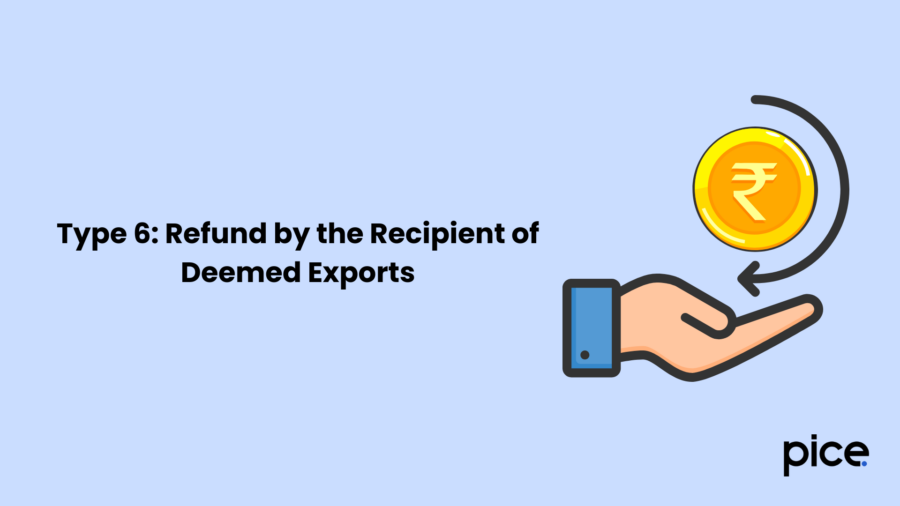
The recipient of deemed exports obtains a tax refund when they have remitted tax on eligible inward supplies and subsequently credited the ITC to their electronic credit ledger. However, in such cases, the supplier must forfeit the right to any such refund.
Recipients should access Statement 5B to claim a GST refund for this reason.
Type 7: Tax Paid for Supplies Towards a SEZ Developer/ Unit (Without Tax Involved)
The steps for refund application remain similar to the ones described for Type 3. However, here you need to pick Statement 4 and the refund value is auto-populated based on the details of the uploaded statement.
Type 8: Tax Furnished on an Intrastate Supply Which is Later Classified as Interstate and Vice-versa
Here, the refund filer must generate Statement 6 and the rest of the application procedure remains the same as shown in Type 3. Once the statement is uploaded, the refund amount is auto-populated.
Type 9: Refund by the Supplier of Deemed Exports
Just like the above category, here also the refund value is auto-populated after the relevant statement is uploaded on the common portal. Here, the filer needs to access Statement 5B.
Type 10: IGST Refund on Export of Services (With Tax Payment)
For an uninterrupted issuance of form GST RFD 02 against this head, one needs to access Statement 2. Next, the steps for claiming a refund remain the same as described for Type 3.
Type 11: Refund on Account of Provisional Assessment/ Assessment or Appeal
For this reason, the return filer must choose the type of order followed by some basic details like order no., order date, demand ID, and so on.
Type 12: Refund Request on ‘Any Other Ground’
One reason under this head can be excessive interest furnished through GSTR-3B. The filer needs to specify the reason within 200 characters along with the refund value.
Step 5: After picking the ground for refund, provide the supporting documents, enter your bank account details and preview the details before finally clicking on 'Save'.
Step 6: Submit RFD-01 by using either EVC or DSC.
Following submission, a proper officer receives your application. They then process it and update the refund status on the GST portal.
Conclusion
Overall, any registered person can claim a timely refund of GST for valid reasons and receive an acknowledgement for the same through form GST RFD-02. It can be tracked further with its unique acknowledgement number and contains all the vital information pertaining to a specific refund application.
If you find difficulties in understanding its individual fields, you may consider taking help of GST return filing software online.
💡If you want to streamline your payment and make GST payments via credit or debit card, UPI consider using the PICE App. Explore the PICE App today and take your business to new heights.
 By
By 







